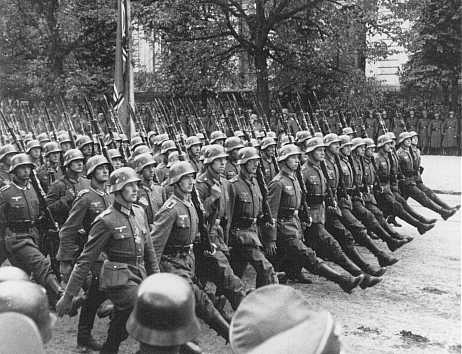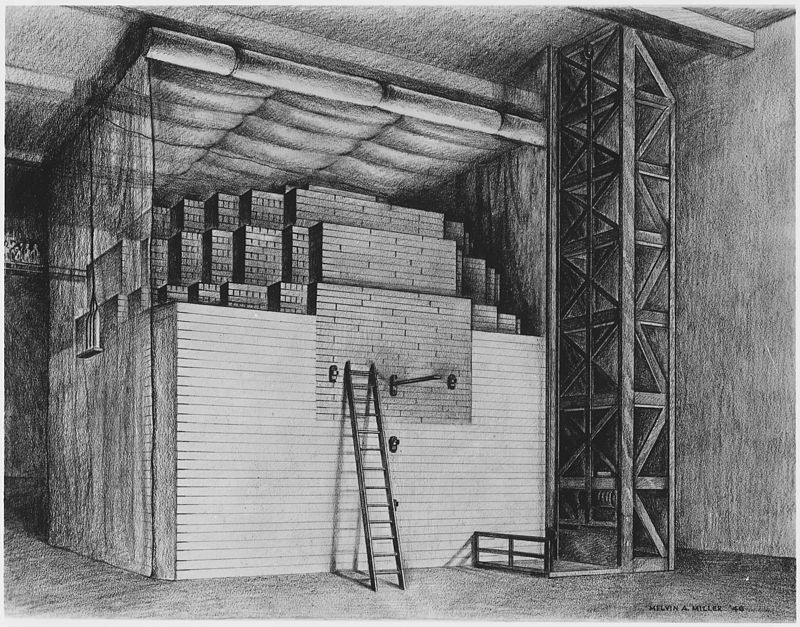It was also in the early thirties that James Chadwick finally discovered the neutron. Just like those men and their visions changed our world, that neutral particle was the key to many future discoveries in nuclear science.
Nuclear experiments with protons and other positive particles were problematic since positive repels positive and it was extremely difficult to get a true collision or fusion. The neutron offered much better possibilities.
By 1935, Enrico Fermi and others had made more massive nuclei with neutron bombardment. Uranium was different. There were some collisions in Fermi's lab that produced smaller nuclei.
Working in Berlin under Hitler, Hahn and Strassmann demonstrated that fission had occurred when the smaller nuclei were created from collisions with neutrons.
Lise Meitner, pictured above with Hahn and Strassmann, was key to understanding the mechanism of fission. The neutron collides with the huge uranium nucleus and causes it to vibrate violently and two halves split off releasing several other neutrons as well.
The calculated energy of just one fission was immense. The energy production capacity of nuclear fission was huge - far better than anything chemical. Its weapon capacity was immense.
Days before WWII broke out in 1939, the ideas of Niels Bohr, Enrico Fermi, and Leo Szilard were combined to fully explain the uranium fission process.
- U-235 is preferred.
- Slow neutrons are preferred but most neutrons move fast.
- Use a moderator like graphite to slow the neutrons for more effective fission.
Hitler invaded Poland and the world sat back and watched.
Nuclear experiments continued and more scientists fled mainland Europe to the US to continue their work here. We didn't react until December of 1941 after the attack on Pearl Harbor.
We knew what was going on in Germany. Hitler wasn't exactly secretive about what he planned to do with the Jews. News reports coming out of Germany and Poland described these concentration camps but we still sent boatloads of Jews back to Germany. Eugenics was being taught in our universities and forced sterilizations were being carried out here during the 20s and 30s. It was nothing like Hitler's Germany but the worldwide academic community was not completely opposed to extermination of undesirables. We used people in radiation experiments - most of them from asylums with no families to defend them.
Anyway, a rapid series of nuclear science developments and a lot of secrecy led to a nuclear reactor in 1942. Under the stands of the University of Chicago football stadium Enrico Fermi and his team made the first self-sustaining chain reaction in what was called a nuclear "pile."
The "Manhattan Project" - our buildup to the nuclear bomb - was well underway and the calculations from this pile led to the next important steps in the project.
Nuclear history details from http://goo.gl/h0tBj9







No comments:
Post a Comment